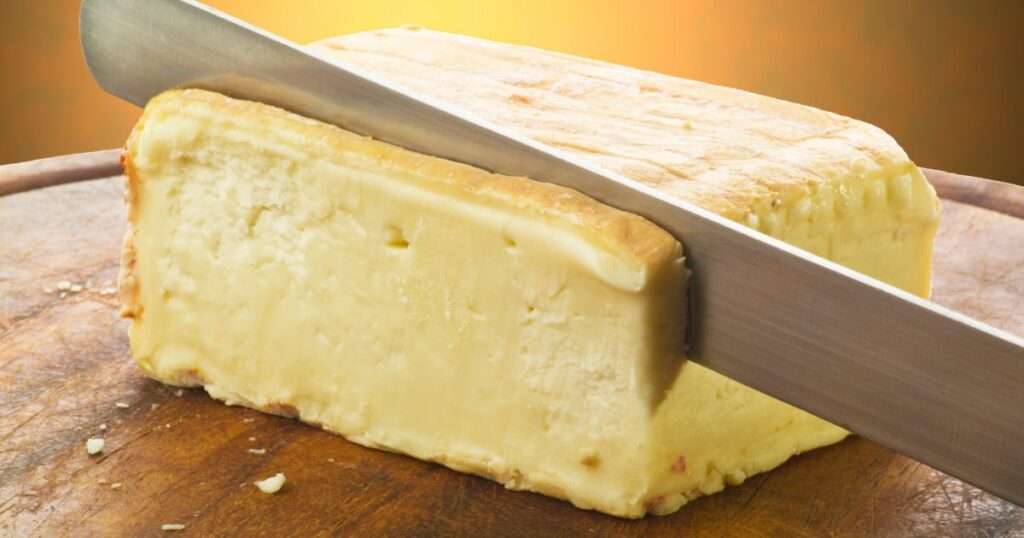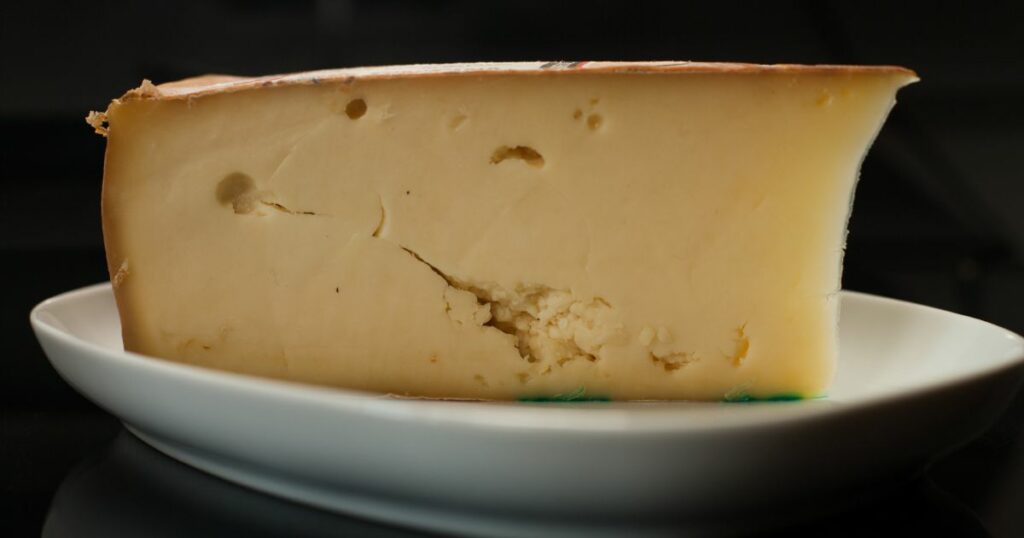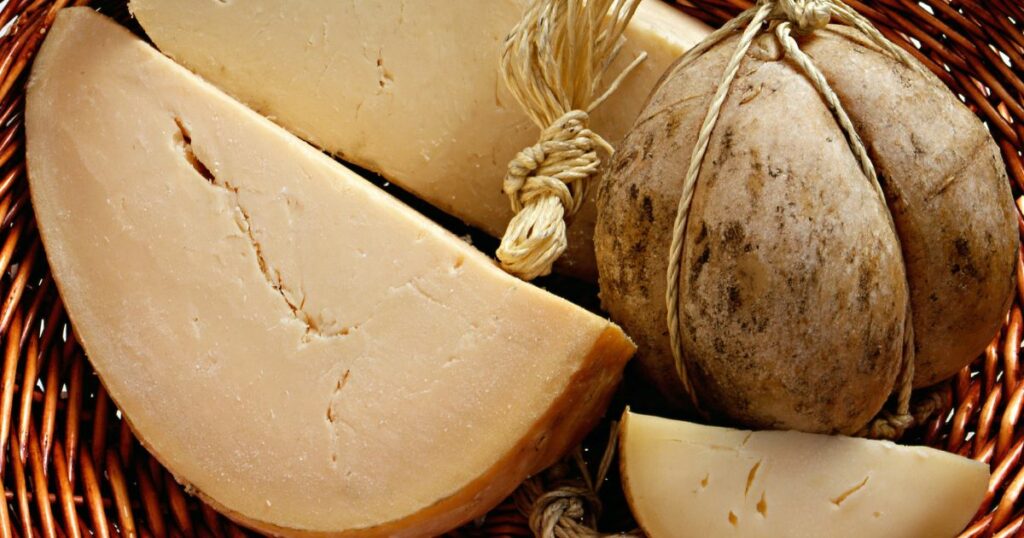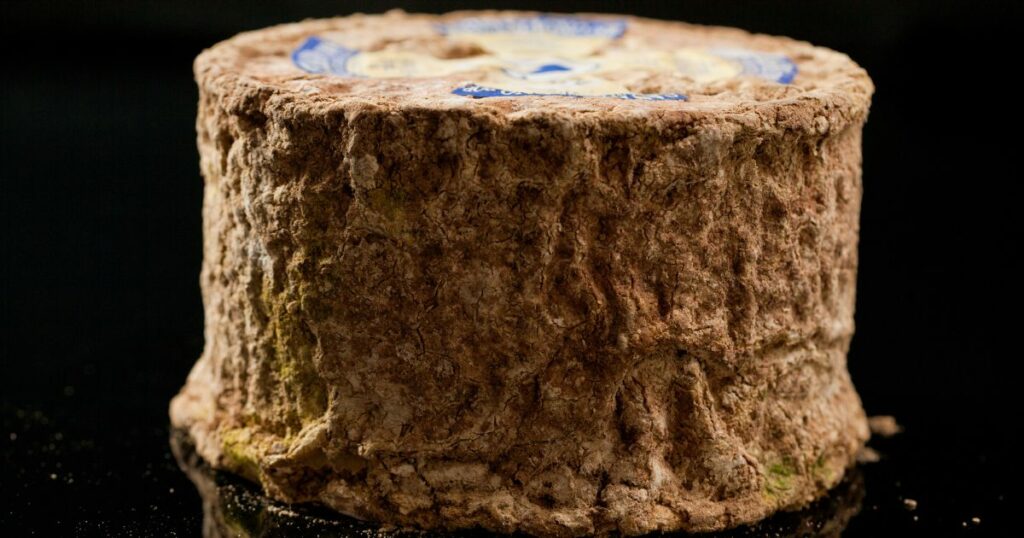Taleggio: The Aromatic Affair

Hailing from the Lombardy region, Taleggio is a semi-soft, washed-rind cheese known for its pungent aroma and mild, fruity flavor. Aged for six to ten weeks, Taleggio has a thin, edible rind and a creamy, pale yellow interior. It’s perfect for melting in pasta dishes, drizzling on polenta, or simply enjoying with crusty bread.
Classic pairing: A fruity white wine like Chardonnay or a light red wine such as Pinot Noir.
Pecorino Romano: The Ancient Classic

Pecorino Romano is one of the oldest cheeses in existence, dating back to ancient Roman times. This hard, salty cheese is made from sheep’s milk and aged for at least eight months. Its robust flavor makes it an excellent grating cheese, perfect for sprinkling on pasta dishes or shaving onto a Caesar salad.
Classic pairing: A crisp white wine like Vermentino.
Asiago: The Versatile Marvel

Produced in the Veneto and Trentino regions, Asiago is a cow’s milk cheese that comes in two varieties: fresh (Asiago Pressato) and aged (Asiago d’Allevo). The fresh version is mild and creamy, while the aged version develops a crumbly texture and a more pronounced, nutty flavor. Asiago is perfect for grating, slicing, or melting.
Classic pairing: For fresh Asiago, try a light white wine like Pinot Grigio; for aged Asiago, opt for a medium-bodied red like Valpolicella.
Fontina: The Fondue Favorite

Originating from the Valle d’Aosta region, Fontina is a semi-soft cheese with a mild, nutty flavor and a smooth, creamy texture. It is made from cow’s milk and aged for three months, developing a pale yellow color and a thin, natural rind. Fontina’s excellent melting properties make it a popular choice for fondue, risotto, and quiches.
Classic pairing: Aromatic white wines like Gewürztraminer or Arneis, or lighter reds like Dolcetto or Barbera.
Caciocavallo: The Hanging Delight

Caciocavallo, which translates to “horse cheese,” is a unique cow’s milk cheese from southern Italy. Traditionally, it is tied in pairs and hung over a wooden beam to age, resulting in its characteristic teardrop shape. Aged for at least two months, Caciocavallo has a firm texture and a sharp, tangy flavor. It is perfect for grilling or frying and can also be grated over pasta dishes.
Classic pairing: A robust red wine such as Primitivo or a fruity white wine like Fiano.
Provolone: The Smoky Sensation

Provolone is a semi-hard, cow’s milk cheese that comes in two varieties: Dolce (mild) and Piccante (sharp). Both types are aged for different durations, with Dolce typically aged for two to three months and Piccante for up to a year. Provolone is often smoked, adding a unique flavor that pairs well with cured meats and olives.
Classic pairing: A medium-bodied red wine like Chianti for Dolce Provolone; a bold red wine like Montepulciano d’Abruzzo for Piccante Provolone.
Robiola: The Creamy Indulgence

Robiola is a soft, creamy cheese originating from the Piedmont region. Made from cow’s, sheep’s, or goat’s milk, or a mixture of the three, Robiola has a tangy, slightly sour taste and a smooth, spreadable texture. It is often enjoyed on its own, with a drizzle of honey, or as a luxurious addition to bruschetta and crostini.
Classic pairing: A crisp white wine like Gavi or a sparkling wine like Prosecco.
Castelmagno: The Mountain Majesty

Castelmagno is a rare and distinctive blue-veined cheese produced in the Piedmont region. Made from a combination of cow’s and sheep’s milk, this semi-hard cheese is aged for at least two months in natural caves, where it develops a crumbly texture and a sharp, piquant flavor. Its assertive taste is perfect for pairing with robust red wines or drizzling with honey.
Classic pairing: A full-bodied red wine like Barolo or a dessert wine like Moscato d’Asti.
Stracchino: The Tasty Treasure

Stracchino, also known as Crescenza, is a soft, fresh cheese from Lombardy. Its name derives from “stracca,” which means “tired” in Italian, as the cows used for producing this cheese were said to be tired from their seasonal migration. Stracchino has a mild, slightly tangy flavor and a velvety, spreadable texture. It is excellent on its own or as a base for sauces and spreads.
Classic pairing: A light, refreshing white wine like Soave or a sparkling wine like Franciacorta.
Scamorza: The Smoked Sibling

Scamorza is a pear-shaped, semi-hard cheese that is similar to mozzarella but drier and more flavorful. Made from cow’s milk, it is typically aged for around two weeks and can be found in both plain and smoked varieties. The smoked version, Scamorza Affumicata, is particularly popular for its rich, savory taste. Scamorza is ideal for grilling, frying, or melting in pasta dishes.
Classic pairing: Classic Pairing: A medium-bodied red wine like Negroamaro or a fruity white wine like Greco di Tufo.
Conclusion
The world of Italian cheeses goes far beyond the well-known Parmigiano Reggiano, Mascarpone, Mozzarella, and Gorgonzola. The 10 cheeses we’ve explored here offer a diverse range of flavors, textures, and culinary possibilities, proving that Italy’s cheese-making tradition is as rich and varied as its history and culture. So, the next time you’re looking to elevate your Italian dishes or create a sensational charcuterie board, don’t hesitate to indulge in these lesser-known but equally delectable Italian cheeses. Buon appetito!
𐡸 𐡸 𐡸 𐡸 𐫱 𐡷 𐡷 𐡷 𐡷
Frequently asked questions
Some lesser-known Italian cheeses include Taleggio, Pecorino Romano, Asiago, Fontina, Caciocavallo, Provolone, Robiola, Castelmagno, Stracchino, and Scamorza.
While some of these cheeses, like Asiago, Provolone, and Fontina, can be found in many grocery stores, others, like Castelmagno and Robiola, may require a visit to a specialty cheese shop or an Italian market.
Most of these cheeses should be stored in the refrigerator, wrapped in wax or parchment paper, and placed in an airtight container. Fresh cheeses like Stracchino and Robiola should be consumed within a few days, while harder cheeses like Pecorino Romano and Asiago can last for several weeks or more.
While the unique flavors and textures of these Italian cheeses are hard to replicate, there are some possible substitutes for specific cheeses. For example, if you can’t find Fontina, you could use Gruyère or Emmental as an alternative in recipes that require a good melting cheese. For Pecorino Romano, you may substitute Parmigiano Reggiano, though the flavor will be slightly different. Keep in mind that these substitutes may not provide the exact taste or texture of the original cheese, but they can still work well in many recipes.



